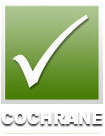
THRIVING EAST OF GREAT DIVIDE
By Linda Mantova
Angus cattle grazing on improved pastures at Robyn and Ged Plunkett's Tamborine property.
Breeding Angus cattle in a coastal environment can be challenging, but Ged and Robyn Plunkett are living proof that it can be done successfully east of the Great Dividing Range.
Running 130 Angus breeders on their 283 hectare property, Tarantella, at Tamborine, in the Gold Coast hinterland, the Plunkett's have worked hard to achieve and maintain a tick free status in their herd.
"We followed a program advised by the manufacturers and treated the whole herd with Cydectin LA at strategic times and have managed to stay completely tick free for the past five years," Mrs Plunkett said.
"We do have the beauty that we only have one neighbour with cattle, so we assisted him to clear his cattle of ticks as well," she said.
"With Angus cattle, you have to look after them that little bit more, and if you're not willing to look after them you shouldn't have them. They are not like Bos Indicus breeds that can tolerate the harsher conditions with ticks and flies and still thrive.
"They will survive but they won't do as well. We have continually aimed to breed for a shorter coat in our herd. Any bulls we select, must have a nice clean coat, good frame and stature, a solid rump as well as good feet and legs."
Mrs Plunkett said their Angus cattle were tick free, however they still vaccinated their young stock against Tick Fever.
"When we sell them they go elsewhere and we want them to stay healthy. After the last drought we leased country from another neighbour who hadn't had cattle for six months. My greatest fear was ticks and sure enough we had an outbreak again, but we re-cleaned them up with Cydectin LA," she said.
Operating a successful registered Holstein Friesian and Jersey dairy herd up until 10 years ago, Mrs Plunkett said they were always attracted to Angus, due to their docility, mothering ability, calving ease and fast maturity.
However, Mrs Plunkett said they had a small Angus herd of 25 breeders more than 20 years ago, which were bred up from "big framed" Holstein cows, as well as buying in some Angus and Brangus cows along the way.
Nowadays, they buy all their bulls from Cochrane Angus at Beaudesert, and with Mrs Plunkett being a vet of 40 years, still Artificially Inseminate (AI) some of their females.
"We've known John and Bev Cochrane a very long time, and whatever John does he does very well and only uses top of the range genetics from both Australian and US sires," she said.
"John has been a tremendous help to us over the years. He often gets contacted by people looking for commercial heifers and he refers them to us. Also, his knowledge of the Angus breed, which he so willingly shares, is invaluable."
Selling their heifer portion out of the paddock, mainly as PTIC heifers, and their steers predominantly through Auctions Plus, the Plunketts currently aim to sell weaner steers straight off the cow.
"Prices have been so good in the last 12-18 months in particular, that we've sold them as weaners," Mrs Plunkett said.
"Normally we would have weaned them and grown them out to feeder size and sold them, but the weaner market has been so hot. It has certainly has come back now, but we are pulling off calves that are averaging more than 300 kilograms at seven and a half months of age. The Angus always command a bit of a premium, particularly on Auctions Plus."
Mrs Plunkett said temperament was a very important trait in their Angus herd.
"At our age we have no desire to get knocked over so we keep nothing with a temperament issue. We just want quiet cattle," she said.
"I've always liked breeding cows. Even when we had the dairy herd, we thought if you're going to get up early in the morning and bother to milk cows you might as well have cows with good confirmation to look at."
Mrs Plunkett said they still get excited when they turn off a nice line of Angus steers or heifers.
"Despite being in a tick area, Angus really do suit our country, as we grow green fodder and strip graze them just like the dairy cows used to. The cows calving in winter are getting a mix of oats, rye grass and clover as well as dry feed, so they make plenty of milk and the calves just grow like mushrooms," she said.
"You can breed them earlier too. We breed them at 14 months so they're calving by two years old."
Their country is a mix of fertile black soil with 1.5kms of Albert River, up to sandy loam and bush country.
"We have 101ha of uncleared bush country that we don't utilise," Mrs Plunkett said.
"We buy a lot of minerals as all this country is phosphorous and copper cobalt deficient but we use PBA Feeds' Hi Phos lick and Breeder link to combat that," she said.
"Never underestimate the value of mineral supplements to assist with achieving target mating weights and breeder fertility."
